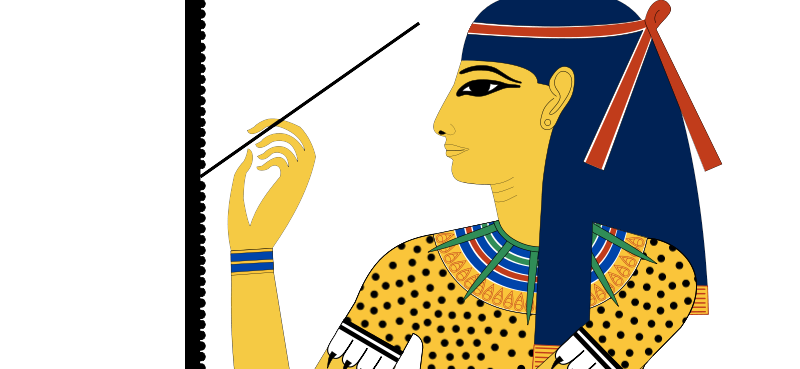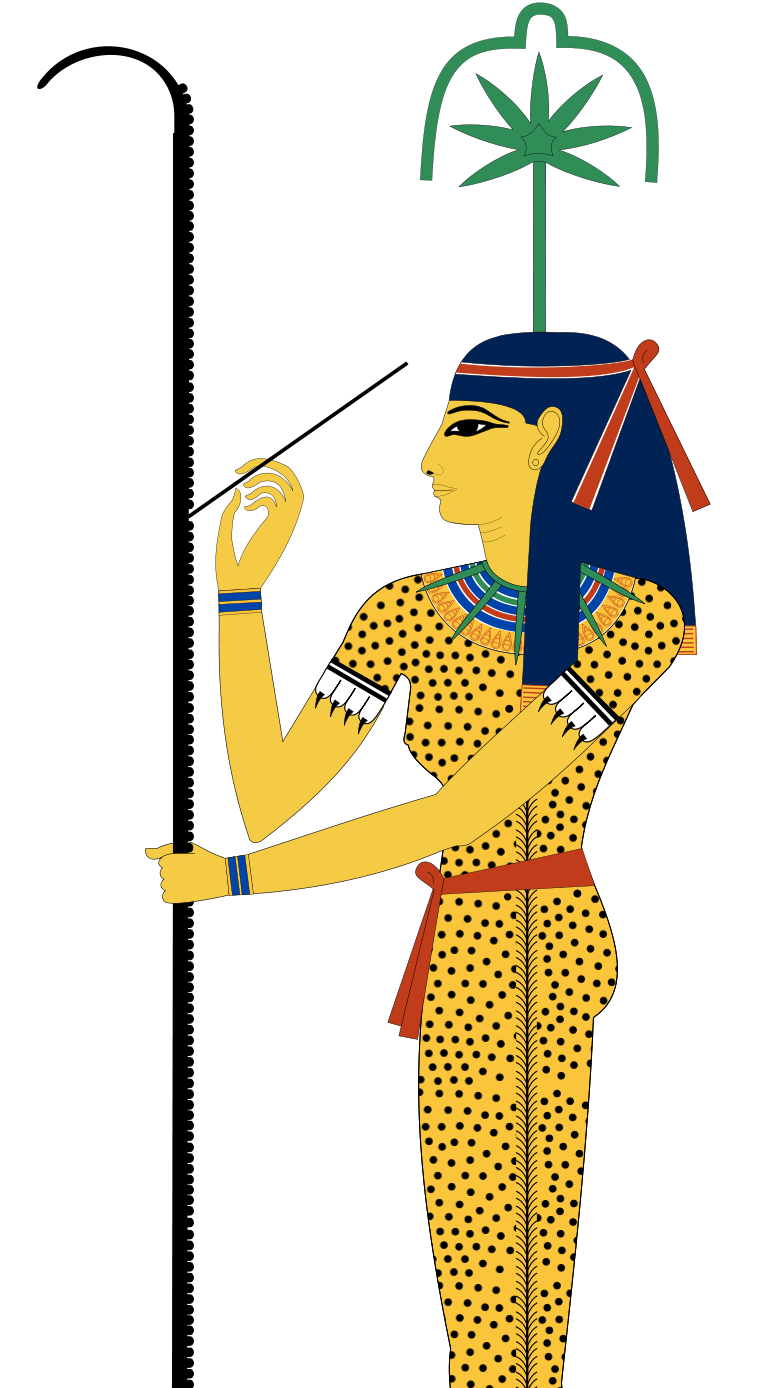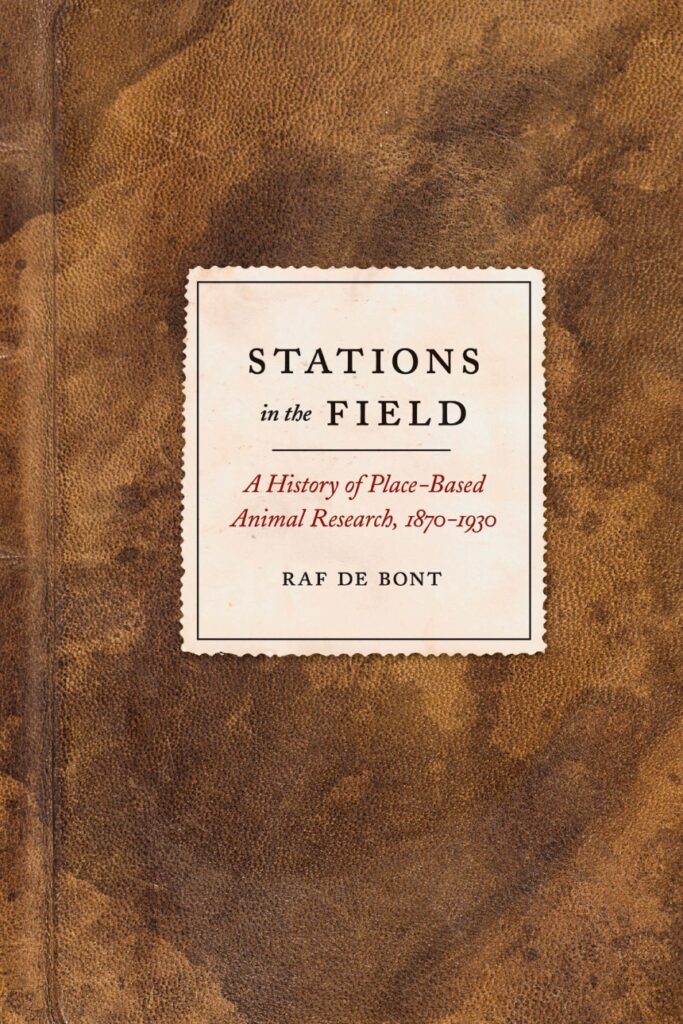Issue 1.2
In this second issue of the CB newsletter, we are exploring issues raised by the most recent Focus section of Isis , “Magnifying Insect Histories .” Every few months, we will cover a special issue or symposium of a journal, as the CB is a living reflection of the conversations taking place among historians of science.
In their introduction to this collection of essays, “Expanded Perspectives on Tiny Animals as Epistemic Agents,” Lisa Onaga and Dominik Huenniger survey the ways bugs have shown up in earlier literature—in studies of agricultural economics and entomology, for instance. But they go on to defend a deeper methodological engagement with insect histories, because these can “generate space for epistemic diversity.” In other words, their point is that insects can help historians of science think more deeply about our relationships with non-human actors as well as other research traditions.
The books, articles, and citations below have been selected with this understanding in mind. The featured titles offer reflections on the connections we have with non-human actors, as well as the connections between history of science and environmental history. The list of citations that follows shows that the bulk of recent work on insects has addressed histories of pesticides and agriculture.
—Judy Kaplan, Editor
Featured Books
These books explore issues of relationality, non-human agency, and place taken up in “Magnifying Insect Histories.” (Note that each citation in the CB includes an abstract, links to reviews, and a list of similar citations. Featured books have all appeared within the last ten years.)
Featured Articles
“Insects have…served as inroads enabling a multitude of disciplines to engage with or contribute to the history of science and encouraged the integration of historical methods with other disciplines,” Onaga and Huenniger write in their introduction (p. 128). The titles below highlight the intersection of history of science and environmental history. Each one is part of a special issue that may contain further citations of interest.
NTM: Zeitschrift für Geschichte der Naturwissenschaften, Technik und Medizin
Volume: 27
Issue: 3
source: Google Books
History of Science
Volume: 57
Issue: 4
source: Google Books
Journal of Interdisciplinary History
Volume: 50
Issue: 2
source: Google Books
Citations about bugs
Below are the articles and books we have from the last ten years indexed by subject for “insect.”
Articles
Arancibia , Florencia and Renata Motta . “Undone Science and Counter-Expertise: Fighting for Justice in an Argentine Community Contaminated by Pesticides.” Science as Culture 28, no. 3 (2019): 277-302.
Bello , David A. “Consider the Qing Locust.” East Asian Science, Technology, and Medicine 48 (2018): 49-80.
Bertomeu Sánchez , José Ramón. “Arsenical Pesticides in Early Francoist Spain: Fascism, Autarky, Agricultural Engineers and the Invisibility of Toxic Risks.” HOST: Journal of History of Science and Technology 13, no. 1 (2019): 76-105.
Bonnell , Jennifer. “Early Insecticide Controversies and Beekeeper Advocacy in the Great Lakes Region.” Environmental History 26, no. 1 (2021): 79-101.
Caniglia , Guido. ““How complex and even perverse the real world can be”: W.D. Hamilton’s early work on social wasps (1964–1968).” Studies in History and Philosophy of Science Part C: Studies in History and Philosophy of Biological and Biomedical Sciences 64 (2017): 41-52.
Catalá-Gorgues , Jesús I. “Un magisterio en la distancia: la relación epistolar entre los entomólogos José María Dusmet y Modesto Quilis.” Asclepio: Archivo Iberoamericano de Historia de la Medicina 70, no. 1 (2018): 214 ff..
Clark , J. F. M. “Pesticides, Pollution and the UK’s Silent Spring, 1963–1964: Poison in the Garden of England.” Notes and Records: The Royal Society Journal of the History of Science 71, no. 3 (2017): 297-327.
Clarke , Sabine and Thomas Lean . “Turning DDT into ‘Didimac’: Making insecticide products and consumers in British farming after 1945.” History and Technology 38, no. 1 (2022): 31-61.
Conis , Elena. “Polio, DDT, and Disease Risk in the United States after World War II.” Environmental History 22, no. 4 (2017): 696-721.
Dağyeli , Jeanine Elif. “The Fight Against Heaven-Sent Insects: Dealing with Locust Plagues in the Emirate of Bukhara.” Environment and History 26, no. 1 (2020): 79-104.
Davis , Frederick Rowe. “Pesticides and the Perils of Synecdoche in the History of Science and Environmental History.” History of Science 57, no. 4 (2019): 469-492.
Dedieu , François. “Secrecies as Organized Ignorance: The Illusion of Knowledge in French Pesticide Regulation.” Science as Culture 31, no. 4 (2022): 455-479.
Deveson , E. D. “Parasites, Politics and Public Science: The Promotion of Biological Control in Western Australia, 1900–1910.” British Journal for the History of Science 49, no. 2 (2016): 231-258.
Durant , Jennie L. “Ignorance loops: How non-knowledge about bee-toxic agrochemicals is iteratively produced.” Social Studies of Science 50, no. 5 (2020): 751-777.
Eamon , William C. “Corn, Cochineal, and Quina: The “Zilsel Thesis” in a Colonial Iberian Setting.” Centaurus: International Magazine of the History of Mathematics, Science, and Technology 60, no. 3 (2018): 141-158.
Feeley , Hugh B. and Craig R. Macadam . “A history of the discovery and study of Plecoptera (stoneflies) in Britain and Ireland (1769–1970s).” Archives of Natural History 49, no. 2 (2022): 372-390.
Frøyen , Anne Jorunn . “Influencing for Results: Bees, Beekeepers and Norwegian Pesticide Legislation.” HOST: Journal of History of Science and Technology 13, no. 1 (2019): 28-50.
González Bueno , Antonio, Carlo Castiillo Rodriguez , Rafaela Domínguez Vilaplana , et al. “Le campagne antimalariche spagnole: l’Italia come modello.” Atti e Memorie, Rivista di Storia della Farmacia 39, no. 2 (2022): 19-24.
Guillem-Llobat , Ximo. “Following Hydrogen Cyanide in the Valencian Country (1907-1933): Risk, Accidents and Standards in Fumigation.” HOST: Journal of History of Science and Technology 13, no. 1 (2019): 51-75.
Guthman , Julie and Sandy Brown . “Whose Life Counts: Biopolitics and the “Bright Line” of Chloropicrin Mitigation in California’s Strawberry Industry.” Science, Technology and Human Values 41, no. 3 (2016): 461-482.
Holmes , Matthew. “Melancholy Consequences: Britain’s Long Relationship with Agricultural Chemicals Since the Mid-Eighteenth Century.” Environment and History 25, no. 1 (2019): 117-134.
Jung , Junho. “DDT Resistance Korean Body Lice and Development of Insecticide Resistance Knowledge during Korean War.” Korean Journal of Medical History 31, no. 3 (2022): 757-791.
Komel , Svit. “Technology in scientific practice: How H. J. Muller used the fruit fly to investigate the X-ray machine.” History and Philosophy of the Life Sciences 45, no. 2 (2023)
Milburn , Olivia. “The Chinese Mosquito: A Literary Theme.” Sino-Platonic Papers , no. 270 (2017): 1-50.
Nelson , E. Charles. “New identifications of natural history images on the “Bodleian Plate”, an early eighteenth-century engraved copperplate.” Archives of Natural History 50, no. 1 (2023): 74-84.
Nelson , E. Charles. “New identifications of natural history images on the “Bodleian Plate”, an early eighteenth-century engraved copperplate.” Archives of Natural History 50, no. 2 (2023): 422-422.
Nielsen , May-Brith Ohman. “Syntheticising Scandinavia: The Introduction of Synthetic Pesticides to Scandinavian Gardens, 1945-1952.” HOST: Journal of History of Science and Technology 14, no. 1 (2020): 113-159.
O’Gorman , Emily. “Imagined Ecologies: A More-Than-Human History of Malaria in the Murrumbidgee Irrigation Area, New South Wales, Australia, 1919–45.” Environmental History 22, no. 3 (2017): 486-514.
Quark , Amy Adams. “Outsourcing Regulatory Decision-making: “International” Epistemic Communities, Transnational Firms, and Pesticide Residue Standards in India.” Science, Technology and Human Values 44, no. 1 (2019): 3-28.
Quick , Tom. “Once Bitten: Mosquito-Borne Malariotherapy and the Emergence of Ecological Malariology Within and Beyond Imperial Britain.” Bulletin of the History of Medicine 97, no. 1 (2023): 67-99.
Romero , Adam. ““From Oil Well to Farm”: Industrial Waste, Shell Oil, and the Petrochemical Turn (1927-1947).” Agricultural History 90, no. 1 (2016): 70-93.
Schneider , Jeremy Robin. “The First Mite: Insect Genealogy in Hooke’s Micrographia.” Annals of Science: The History of Science and Technology 75, no. 3 (2018): 165-200.
Segata , Jean. “Chikungunya in Brazil, an Endless Epidemic.” Centaurus: International Magazine of the History of Mathematics, Science, and Technology 64, no. 1 (2022): 133-144.
Soppelsa , Peter S. and Amy Rodgers . “Origins of the Flyswatter.” Technology and Culture 60, no. 3 (2019): 886-895.
Spary , E. C. and Anya Zilberstein . “On the Virtues of Historical Entomophagy.” Osiris: A Research Journal Devoted to the History of Science and Its Cultural Influences 35 (2020): 1-19.
Strekopytov , Stanislav. “Corrosive sublimate and its introduction as an insecticide for preserving natural history specimens in the eighteenth century.” Archives of Natural History 48, no. 1 (2021): 22-41.
Strother , Christian. “Waging War on Mosquitoes: Scientific Research and the Formation of Mosquito Brigades in French West Africa, 1899–1920.” Journal of the History of Medicine and Allied Sciences 71, no. 4 (2016): 447-468.
Wang , Jessica. “Plants, Insects, and the Biological Management of American Empire: Tropical Agriculture in Early Twentieth-Century Hawai‘i.” History and Technology 35, no. 3 (2019): 203-236.
Winterbottom , Anna. “Becoming “Traditional”: A Transnational History of Neem and Biopiracy Discourse.” Osiris: A Research Journal Devoted to the History of Science and Its Cultural Influences 36 (2021): 262-283.
Books
Bass , Marisa Anne. Insect Artifice: Nature and Art in the Dutch Revolt . Princeton University Press, 2019. ISBN :9780691177151.
Bohme , Susanna Rankin. Toxic Injustice: A Transnational History of Exposure and Struggle . University of California Press, 2014. ISBN :9780520278981.
Buj Buj , Antonio. Plagas de langosta: de la plaga bíblica a la ciencia de la acridología . Ediciones del Serbal, 2016. ISBN :9788476288283.
Davis , Frederick Rowe. Banned: A History of Pesticides and the Science of Toxicology . Yale University Press, 2014. ISBN :9780300205176.
Drouin , Jean-Marc. Philosophie de l’insecte . Éditions du Seuil, 2014. ISBN :9782021118896.
Endersby , Ian and Heinrich Fliedner . The Naming of Australia’s Dragonflies . Busybird Publishing, 2015. ISBN :9781925260625.
Etheridge , Kay and Michael Ritterson . The Flowering of Ecology: Maria Sibylla Merian’s Caterpillar Book . Brill, 2020. ISBN :9789004284807.
Grant , Bruce. Observing Evolution: Peppered Moths and the Discovery of Parallel Melanism . Johns Hopkins University Press, 2021. ISBN :9781421441658.
Hippel , Frank Von. The Chemical Age: How Chemists Fought Famine and Disease, Killed Millions, and Changed Our Relationship with the Earth . University of Chicago Press, 2020. ISBN :9780226697246.
Idema , Wilt. Insects in Chinese Literature: A Study and Anthology . Cambria Press, 2019. ISBN :9781604979541.
Jones , Richard. Wasp . Reaktion Books, 2019. ISBN :9781789141610.
Jundt , Thomas. Greening the Red, White, and Blue: The Bomb, Big Business, and Consumer Resistance in Postwar America . Oxford University Press, 2014. ISBN :9780199791200.
Li , Shizhen and Paul Ulrich Unschuld . Ben Cao Gang Mu, Volume VIII: Clothes, Utensils, Worms, Insects, Amphibians, Animals with Scales, Animals with Shells . University of California Press, 2021. ISBN :9780520379916.
Mart , Michelle. Pesticides, A Love Story: America’s Enduring Embrace of Dangerous Chemicals . University Press of Kansas, 2015. ISBN :9780700621286.
Mavhunga , Clapperton Chakanetsa. The Mobile Workshop: The Tsetse Fly and African Knowledge Production . MIT Press, 2018. ISBN :9780262535021.
Mavhunga , Clapperton Chakanetsa. The Mobile Workshop: The Tsetse Fly and African Knowledge Production . MIT Press, 2018. ISBN :9780262535021.
Nading , Alexander M. . Mosquito Trails: Ecology, Health, and the Politics of Entanglement . University of California Press, 2014. ISBN :9780520282612.
Romero , Adam. Economic Poisoning: Industrial Waste and the Chemicalization of American Agriculture . University of California Press, 2021. ISBN :9780520381568.
Sarasohn , Lisa Tunick. Getting Under Our Skin: The Cultural and Social History of Vermin . Johns Hopkins University Press, 2021. ISBN :9781421441382.
Slongwhite , Dale Finley and Jeannie Economos . Fed up: The High Costs of Cheap Food . University Press of Florida, 2014. ISBN :9780813049847.
Sorensen , W. Conner, Edward H. Smith , Janet R. Smith , et al. Charles Valentine Riley: Founder of Modern Entomology . University of Alabama Press, 2019. ISBN :9780817320096.
Tompkins , Adam. Ghostworkers and Greens: The Cooperative Campaigns of Farmworkers and Environmentalists for Pesticide Reform . ILR Press, 2016. ISBN :9780801456688.
Turilazzi , Stefano. Entomoterapia . Edizioni ETS, 2019. ISBN :9788846755674.
Vail , David D. Chemical Lands: Pesticides, Aerial Spraying, and Health in North America’s Grasslands since 1945 . The University of Alabama Press, 2018. ISBN :9780817319731.
Webb , James L. A. The Long Struggle against Malaria in Tropical Africa . Cambridge University Press, 2014. ISBN :9781107052574.
Wilkinson , Rick. Return of the Phasmid: Australia’s Rarest Insect Fights Back from the Brink of Extinction . Christopher Beck Books, 2014. ISBN :9781876077075.
Willoughby , Urmi Engineer . Yellow Fever, Race, and Ecology in Nineteenth-Century New Orleans . Louisiana State University Press, 2017. ISBN :9780807167748.
Chapters
Andrietti , Francesco and Carlo Polidori . “Un’analisi storico-biologica delle indagini di Antonio Vallisneri e Diacinto Cestoni su vespe parassitoidi e galligene.” In Ex ovo omnia. Parassitologia e origine delle epidemie nelle ricerche e nell’opera di Antonio Vallisneri , edited by Generali, Dario (2019), 95-133.
Generali , Dario. “Un fronte della battaglia contro la tesi della generazione spontanea. Gli studi di Antonio Vallisneri sull’origine degli insetti delle galle e di altri parassiti di piante e animali.” In Ex ovo omnia. Parassitologia e origine delle epidemie nelle ricerche e nell’opera di Antonio Vallisneri , edited by Generali, Dario (2019), 1-93.
Harrison , Nicola and Efstratia Verveniotou . “The Conservation of Insect Wax Models at the Natural History Museum, London.” In Ceroplastics: The Art of Wax , edited by Ballestriero, Roberta (2019), 377-386.
Jorink , Eric. “Insects, Philosophy and the Microscope.” In Worlds of Natural History , edited by Curry, Helen Anne (2018), 131-148.
Ogilvie , Brian W. “Insects in John Ray’s Natural History and Natural Theology.” In Zoology in Early Modern Culture: Intersections Of Science, Theology, Philology, and Political and Religious Education , edited by Enenkel, K. A. E. (2014)
Ogilvie , Brian W. “Order of Insects: Insect species and Metamorphosis Between Renaissance and Enlightenment.” In The Life Sciences in Early Modern Philosophy , edited by Nachtomy, Ohad (2014), 222-245.
Ogilvie , Brian W. “Willughby on Insects.” In Virtuoso by Nature: The Scientific Worlds of Francis Willughby FRS (1635-1672) , edited by Birkhead, Tim R. (2016), 335-359.






Leave a Reply